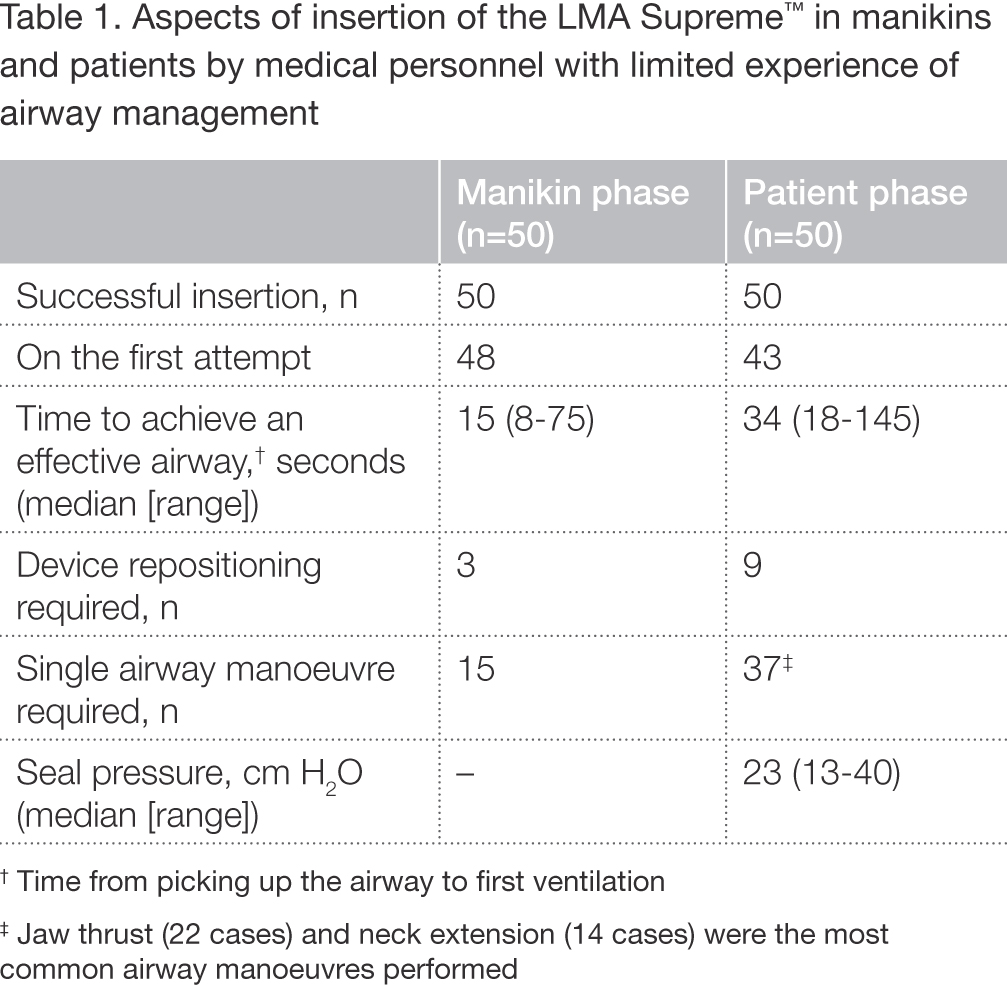LMA Supreme™ insertion by novices in manikins and patients
Authors
Howes B.W. et al.
Publication
Anaesthesia 2010; 65: 343-347.
Summary
- To evaluate the use of the LMA Supreme™ in manikins and patients by medical personnel with limited experience of airway management
- There were no failed insertions of the LMA Supreme™ in either manikins or patients by medical personnel with limited experience of airway management
- Medical personnel with limited experience of airway management can successfully use the LMA Supreme™
Objectives:
- To evaluate the use of the LMA Supreme™ in manikins and patients by medical personnel with limited experience of airway management
Method:
- This prospective study was carried out in two stages
- The LMA Supreme™ was inserted in manikins in the first stage of the study and in patients in the second phase of the study
- Eligible medical personnel included non-anaesthetic doctors, medical students, operating department practitioners and anaesthetic and intensive care nurses
- To participate in the patient phase of the study, medical personnel had to have attended an advanced life support course that included LMA insertion
- Patients involved in the second phase of the study were American Society of Anesthesiologists physical status 1-3 and were undergoing non-emergency surgery that required general anaesthesia and the use of a supraglottic airway device
- The study endpoints were
- Number of insertion attempts
- Ease of insertion
- Time taken to achieve an effective airway
- Adequate ventilation
- Airway manipulations
- Complications
Results:
- Overall, 50 medical personnel were involved in each stage of the study
- There were 34 male and 16 female patients (median age 38 years; median body weight 77 kg) in the second phase of the study
- Aspects of insertion of the LMA Supreme™ during both phases of the study are shown in Table 1
- There were no failed insertions during either phase of the study
- No complications or significant difficulties were reported in the manikin phase of the study
- During the patient phase of the study, mechanical ventilation was achieved in all cases
- Five patients coughed following the insertion of the LMA Supreme™ and in two cases blood was observed on the device when it was re-inserted
- No important complications (i.e. loss of airway, hypoxia, laryngospasm or bronchospasm) were noted
Conclusions:
- The LMA Supreme™ can be successfully used in both manikins and patients by medical personnel with limited experience of airway management
- The results of this study suggest that the LMA Supreme™ “is suitable for use by airway novices”
